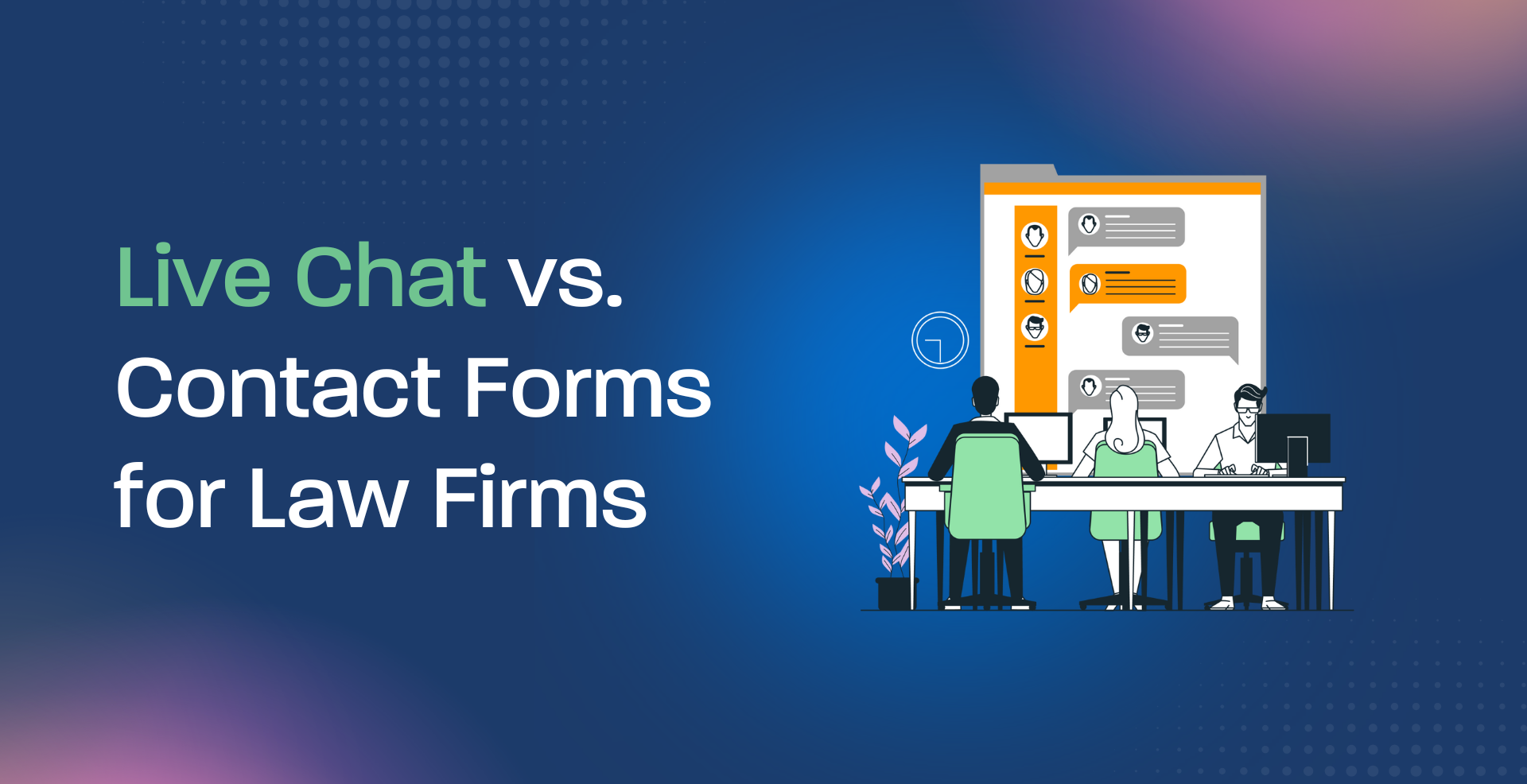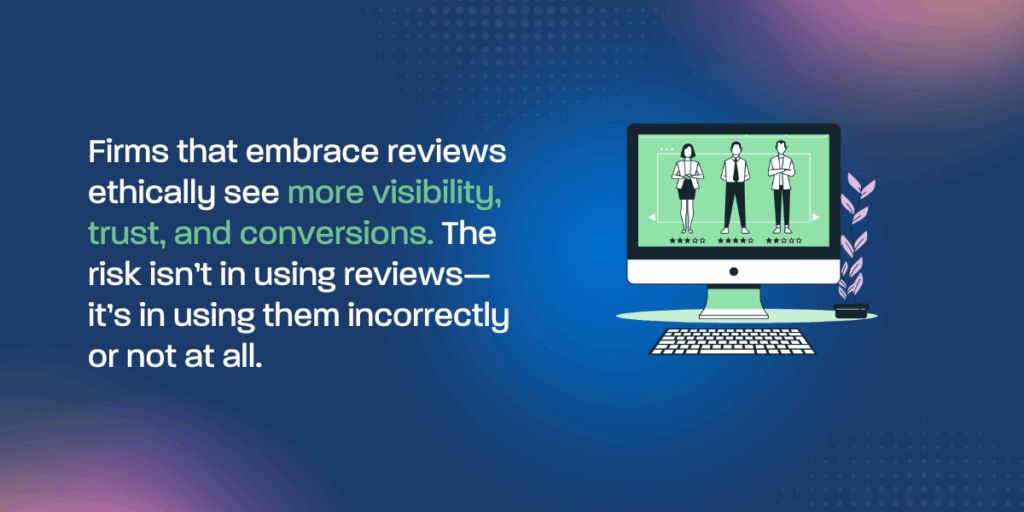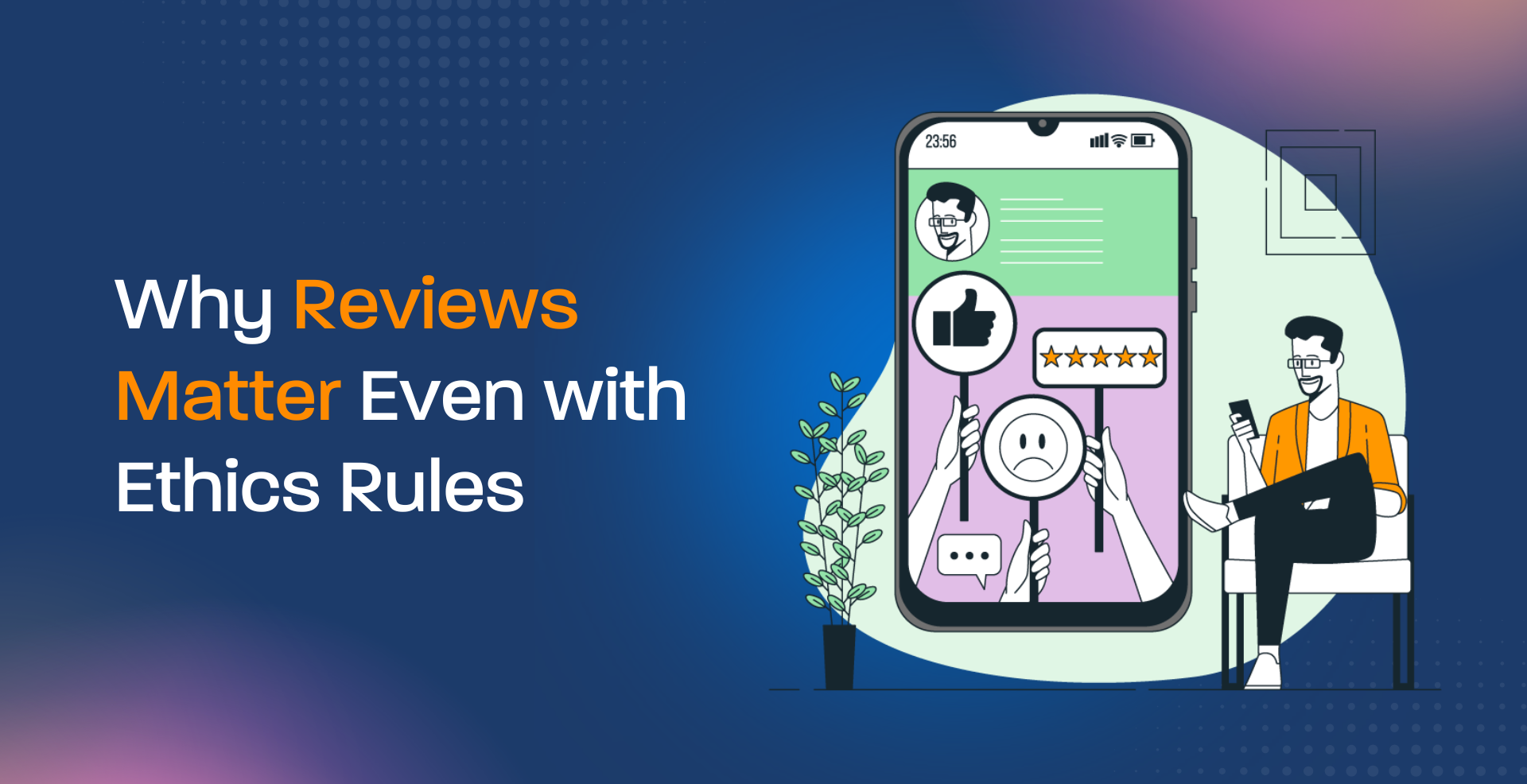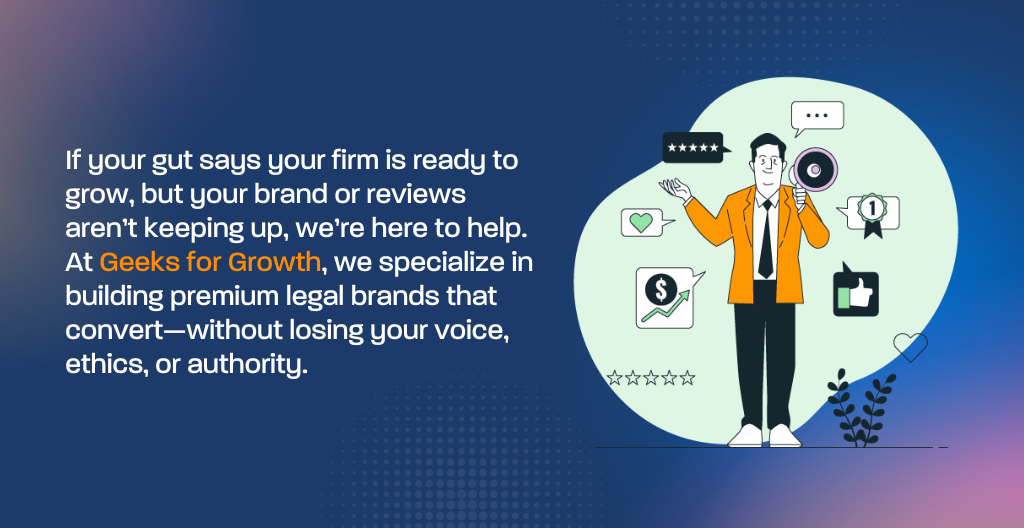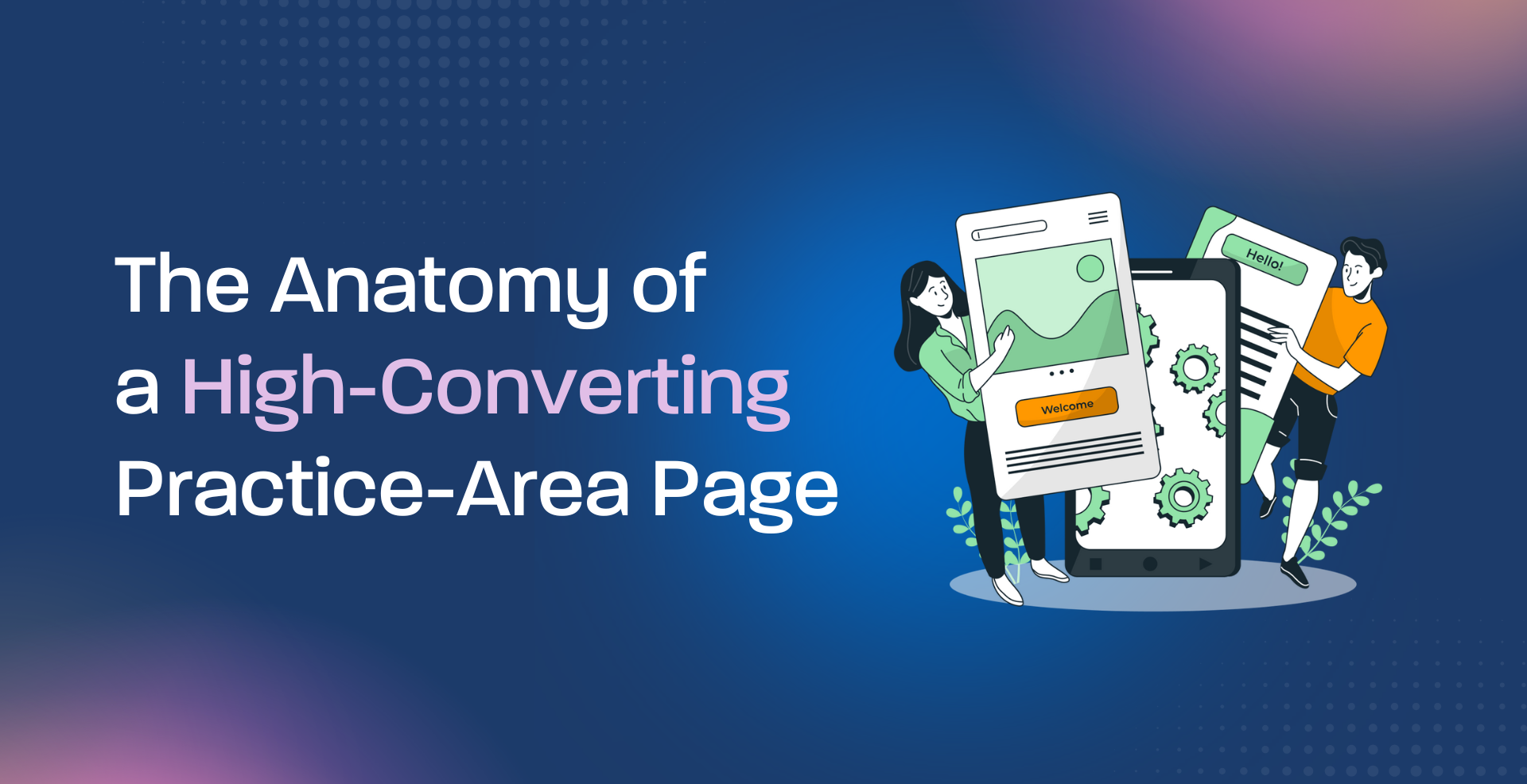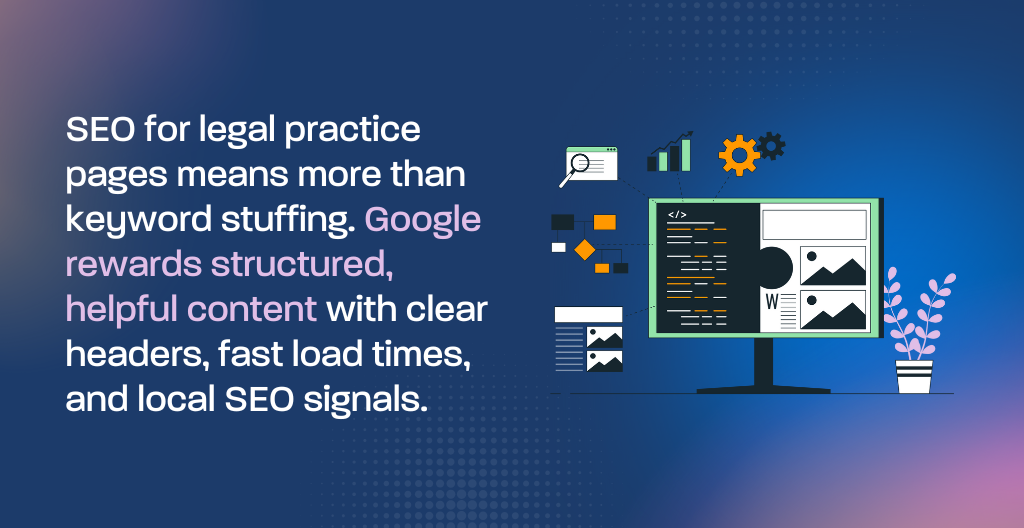How Above-the-Fold Design Wins (or Loses) High-Value Legal Cases in Seconds
Let’s get brutally honest.
When a potential client lands on your law firm’s website, they’re not calmly browsing. They’re stressed, anxious and desperately looking for someone who can solve a life-altering problem.
And your website’s top 600 pixels — that visible slice before a user scrolls — has one job: Convince them in seconds that you’re that someone.
At Geeks for Growth, we’ve reviewed hundreds of law firm websites. The truth? Most waste valuable real estate on vague taglines, stock imagery, or worse, nothing that builds trust or clarifies value.
Why Above-the-Fold Strategy Matters for Law Firms
Think of your top 600 pixels as your digital first impression. This is where snap judgments form.
According to a 2023 Nielsen Norman Group study, users form trust impressions in just 0.5 seconds. That means your headline, visuals, and badges must immediately answer two questions:
- “Can they solve my legal problem?”
- “Can I trust them with it?”
Now imagine you’re a personal injury client in Salt Lake City. Which homepage wins?
- Option A: “We care about your future.”
- Option B: “Award-Winning Salt Lake Personal Injury Lawyers | Millions Recovered. Call for a Free Case Review.”
Clear beats clever every time.
What Your Website Should Include Above the Fold
Here’s what high-converting law firm websites do consistently:
- Headline that names the case type & result (“Utah Family Lawyers Protecting Custody & Asset Rights Since 2008”)
- Trust badges (Super Lawyers, AV Rating, State Bar)
- Primary call to action (e.g., “Schedule a Free Case Review”)
- Real attorney photos (no stock models here)
- Case-type-specific clarity (“Injury,” “Immigration,” “Business Litigation”)
This combo creates instant trust and positions you as a serious legal professional, not just another website in a long list of Google results.
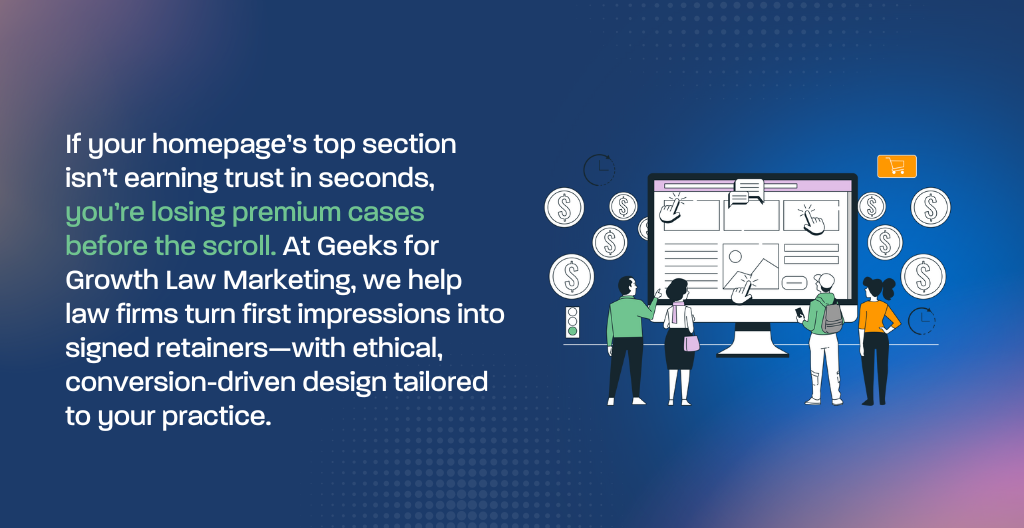
Want to See How Your Site Measures Up?
If you’re not 100% sure what your homepage looks like to a nervous prospect, we’ll show you—fast.
Request a 5-Minute Spot Check.
We’ll send a one-page list of above-the-fold trust fixes you can implement immediately.
Above-the-fold strategy is just one piece of your growth engine.
If you’re serious about attracting premium cases, you’ll want to read our full breakdown in The Law-Firm Growth Blueprint: Branding, Web Design & SEO That Attract and Convert High-Value Cases.
It’s your end-to-end guide to building a law firm marketing system that earns trust fast, converts better, and ranks higher—without the fluff.
Want a Second Opinion on Your Homepage?
If your homepage’s top section isn’t earning trust in seconds, you’re losing premium cases before the scroll. At Geeks for Growth Law Marketing, we help law firms turn first impressions into signed retainers—with ethical, conversion-driven design tailored to your practice.
Book a Free 15-Minute Website Conversion Review.
We’ll analyze your above-the-fold layout, trust signals, and intake friction—then share the fastest, highest-ROI improvements.Schedule Your Free Consult Now →

